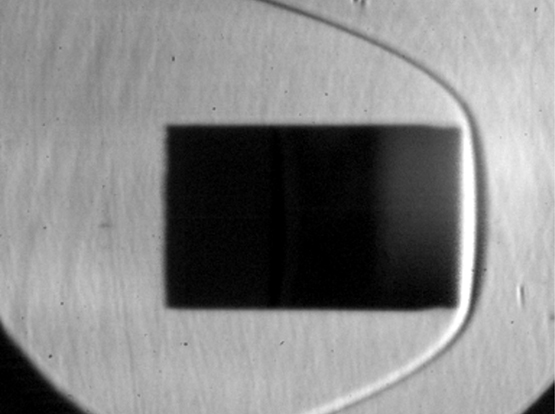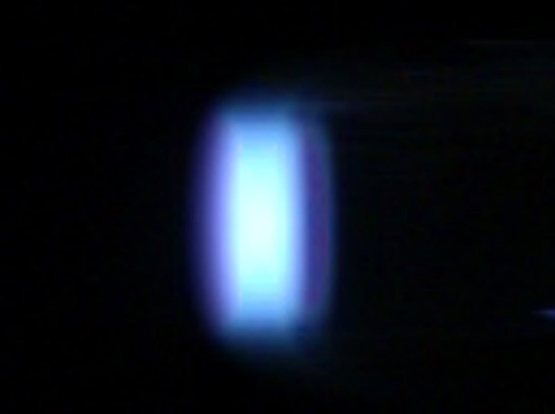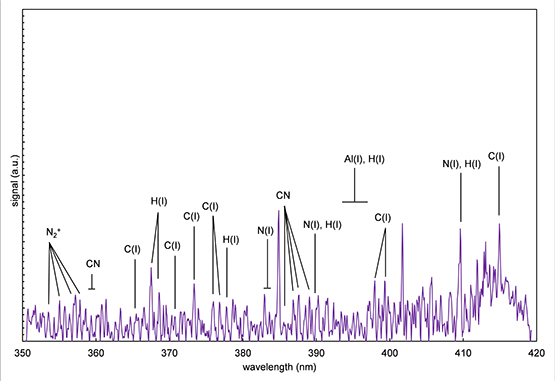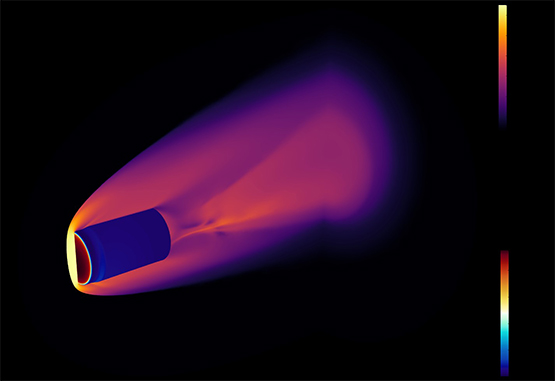Background
Hypersonics is generally defined as the subfield of fluid mechanics that studies fluid flow at speeds above Mach 5. The hypersonic flight regime poses very interesting and unique challenges since it results in extremely high temperatures and loads on the vehicle and its control surfaces. These challenges make it very difficult to design and test hypersonic vehicles. The two-stage light gas gun (LGG) of SwRI’s Engineering Dynamics Department is one of the few facilities in the United States capable of achieving flight speeds of interest for hypersonics research. During this research program, several optical diagnostic techniques were used to understand the flow structure around hypersonic vehicles that were launched at speeds exceeding Mach 14. These experiments were used as the basis for a series of CFD simulations aimed at modeling the flow field around the vehicles.
Approach
This program used a two-pronged approach to characterize both computationally and experimentally the flow around hypersonic vehicles. By taking this approach, researchers probed certain areas of the hypersonic flight regime that are not fully understood, such as how the heat transfer and fluid composition change as functions of atmospheric composition and altitude, and they validated the computational tools that were recently acquired to solve complex flow fields.
Accomplishments
This project accomplished all its stated objectives and a few more that were not part of the original scope of work. It was shown that the chemical composition of the flow field surrounding hypersonic vehicles can be characterized using the optical diagnostic tools developed during this project. In addition, the experiments were later successfully modeled using newly acquired CFD tools. These capabilities have already been leveraged to obtain a contract to study hypersonic vehicle separation over the next three years.

Figure 1a: Schlieren high-speed photography of a flat-faced cylinder at Mach 17.

Figure 1b: Color high-speed photography of a flat-faced cylinder at Mach 17.

Figure 1c: Black-and-white high-speed photography of a flat-faced cylinder at Mach 17.

Figure 2: Spectrographic data for a flat-faced cylinder at Mach 17.

Figure 3: Full field simulation of a flat-faced cylinder at Mach 17 showing surface pressure and total gas temperature.
